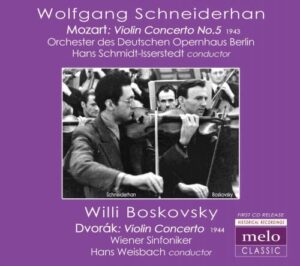CALVET QUARTET plays Ravel, Debussy, Milhaud and Samazeuilh
Ravel: String Quartet in F Major, M 35
Debussy: String Quartet in G minor, L 85
Recorded · 02 August 1946 · Stuttgart · Stadttheater · Süddeutscher Rundfunk · Live Recording
Milhaud: String Quartet No 12 in C Major, Op 252
Samazeuilh: Cantabile et Capriccio for String Quartet (1947)
Recorded · 29 November 1948 · Paris · Studio RDF · Radiodiffusion Française · Radio Studio Recording
Joseph Calvet recalls his encounter with Ravel [French]
Recorded · 21 September 1972 · Paris · André Peyrègne · Interviewer
Joseph Calvet · 1st violin
Jean André Champeil · 2nd violin
Maurice Husson · viola
Manuel Amédée Recassens · cello
Article number: MC 4005
UPC barcode: 791154054413
Recording date: 1946 – 1948
Release date: July 2016
Booklet: 8 Pages
Total timing: 79:43
From the Original Masters ∙ © 2016 Meloclassic
September 2016 ∙ MusicWeb International ∙ Calvet Quartet plays Ravel, Debussy, Milhaud and Samazeuilh
They revisit two of the earlier group’s greatest pre-war recordings, that now long-established pairing of Ravel and Debussy. The contours of the conception are very similar though it’s noticeable that in these post-war readings the slow movements are more relaxed than in the studio inscriptions. Whilst the corporate sonority of the re-established group can’t replicate that of the superbly responsive earlier line-up, it is still led by Calvet’s expressively lyrical and lithe playing. Acute rhythmic vitality is still there, Calvet ensuring that phrasing is agile and alive, and that the music’s full palette is evoked. The evocative richness of the Debussy finale hearkens back to the group’s heyday – so too the vividly projected pizzicati in the Ravel. And if the Ravel’s finale is not quite as vif as in 1936-37, it’s hardly lumpy. Still supple, subtle and vivacious this incarnation of the Calvet proves to have been very well drilled by its eponymous leader. Milhaud’s delightful Quartet No.12 was dedicated to the memory of Fauré. Its lyricism is enhanced by an almost perfumed central slow movement, where Calvet’s playing is most affecting, and topped by a lithe and avuncular finale. The real novelty is Gustave Samazeuih, whose Cantabile and Capriccio the group premiered in 1947. This Paris radio performance in 1948 reveals as still intact Calvet’s quality of elfin floated tone and use of discreet but highly seductive portamenti. It helps that the work itself is so seductive – songful in the Cantabile and, in the separately tracked Capriccio, sporting dappled pizzicati à la Ravel. The refined chanson element is meat and drink to this ensemble. It’s back announced, somewhat to my surprise, by an American studio announcer. Was this broadcast for export? There is an interesting if brief two-minute interview (in French) with Calvet in 1972 when he recollects meeting Ravel. The digipak houses an excellent booklet note and characteristically finely reproduced photographs. The studio recordings are of fine quality if just a bit boxy. Despite the existence of the two great pre-war recordings of the Ravel and Debussy – which have been made available several times on CD – there’s real value to be had in tracing Calvet’s reformed and very different ensemble. It was just in time too, as illness forced him to disband the group one last time in 1950.
View here
May 2017 ∙ MusicWeb International ∙ Calvet Quartet plays Ravel, Debussy, Milhaud and Samazeuilh
On this live radio broadcast, the perennial pairing derives from August 1946, in the ensemble’s final incarnation. What strikes me in these performances is the idiomatic sense of style they bring to the music. Tempi are comfortable, and phrasing is natural and instinctive. Debussy’s Quartet is more passionately intense, with an underlying dramatic intent. In the Ravel, the impressionistic elements are emphasized. The players are highly sensitive to the infinite subtleties, nuances and inflections within the both scores. Each work employs pizzicato passages in its second movement. These are especially successful, with the plucked strings resounding warmly and distinctly. The other two pieces, by Milhaud and Samazeuilh, were taped two years later, in November 1948. The String Quartet No. 12 by Milhaud was written to commemorate the hundredth anniversary the birth of Gabriel Fauré. It has a gorgeous lyrical slow movement, the emotional heart of the work, which the Calvets savour to perfection. The opening movement is sunny and joyous. The finale, lively and genial, is played here with scintillating virtuosity and aplomb. Ensemble is stunning.
View here







